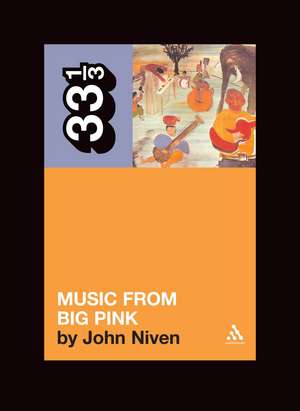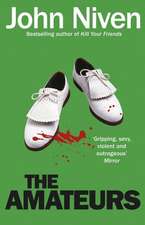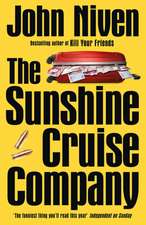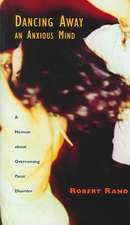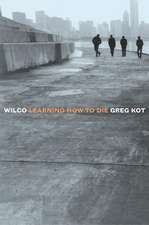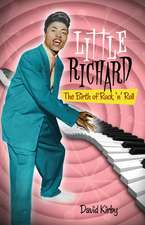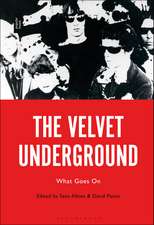The Band's Music from Big Pink: 33 1/3
Autor John Nivenen Limba Engleză Paperback – 31 dec 2005
Din seria 33 1/3
- 39%
 Preț: 47.02 lei
Preț: 47.02 lei - 39%
 Preț: 46.92 lei
Preț: 46.92 lei - 40%
 Preț: 46.46 lei
Preț: 46.46 lei - 40%
 Preț: 46.65 lei
Preț: 46.65 lei - 39%
 Preț: 46.74 lei
Preț: 46.74 lei - 40%
 Preț: 46.29 lei
Preț: 46.29 lei - 39%
 Preț: 46.74 lei
Preț: 46.74 lei - 39%
 Preț: 47.19 lei
Preț: 47.19 lei - 39%
 Preț: 46.74 lei
Preț: 46.74 lei - 39%
 Preț: 47.62 lei
Preț: 47.62 lei - 40%
 Preț: 46.39 lei
Preț: 46.39 lei - 39%
 Preț: 46.92 lei
Preț: 46.92 lei - 39%
 Preț: 46.74 lei
Preț: 46.74 lei - 40%
 Preț: 46.56 lei
Preț: 46.56 lei - 40%
 Preț: 46.46 lei
Preț: 46.46 lei - 39%
 Preț: 46.84 lei
Preț: 46.84 lei - 40%
 Preț: 46.29 lei
Preț: 46.29 lei - 40%
 Preț: 46.56 lei
Preț: 46.56 lei - 40%
 Preț: 46.29 lei
Preț: 46.29 lei - 39%
 Preț: 46.92 lei
Preț: 46.92 lei - 39%
 Preț: 47.53 lei
Preț: 47.53 lei - 39%
 Preț: 46.74 lei
Preț: 46.74 lei - 39%
 Preț: 47.62 lei
Preț: 47.62 lei - 39%
 Preț: 46.92 lei
Preț: 46.92 lei - 39%
 Preț: 47.27 lei
Preț: 47.27 lei - 40%
 Preț: 46.39 lei
Preț: 46.39 lei - 40%
 Preț: 46.29 lei
Preț: 46.29 lei - 39%
 Preț: 46.74 lei
Preț: 46.74 lei - 39%
 Preț: 47.62 lei
Preț: 47.62 lei - 40%
 Preț: 46.02 lei
Preț: 46.02 lei - 39%
 Preț: 47.44 lei
Preț: 47.44 lei - 40%
 Preț: 46.39 lei
Preț: 46.39 lei - 39%
 Preț: 46.92 lei
Preț: 46.92 lei - 39%
 Preț: 47.09 lei
Preț: 47.09 lei - 39%
 Preț: 46.74 lei
Preț: 46.74 lei - 39%
 Preț: 47.19 lei
Preț: 47.19 lei - 39%
 Preț: 46.74 lei
Preț: 46.74 lei - 39%
 Preț: 46.74 lei
Preț: 46.74 lei - 39%
 Preț: 46.74 lei
Preț: 46.74 lei - 39%
 Preț: 46.74 lei
Preț: 46.74 lei - 39%
 Preț: 46.74 lei
Preț: 46.74 lei - 40%
 Preț: 46.65 lei
Preț: 46.65 lei - 39%
 Preț: 47.19 lei
Preț: 47.19 lei - 40%
 Preț: 46.29 lei
Preț: 46.29 lei - 39%
 Preț: 46.74 lei
Preț: 46.74 lei - 40%
 Preț: 46.56 lei
Preț: 46.56 lei - 40%
 Preț: 46.46 lei
Preț: 46.46 lei - 40%
 Preț: 46.56 lei
Preț: 46.56 lei - 39%
 Preț: 46.74 lei
Preț: 46.74 lei
Preț: 47.09 lei
Preț vechi: 77.39 lei
-39% Nou
Puncte Express: 71
Preț estimativ în valută:
9.01€ • 9.37$ • 7.44£
9.01€ • 9.37$ • 7.44£
Carte disponibilă
Livrare economică 24 martie-07 aprilie
Preluare comenzi: 021 569.72.76
Specificații
ISBN-13: 9780826417718
ISBN-10: 082641771X
Pagini: 168
Dimensiuni: 121 x 165 x 10 mm
Greutate: 0.15 kg
Editura: Bloomsbury Publishing
Colecția Continuum
Seria 33 1/3
Locul publicării:New York, United States
ISBN-10: 082641771X
Pagini: 168
Dimensiuni: 121 x 165 x 10 mm
Greutate: 0.15 kg
Editura: Bloomsbury Publishing
Colecția Continuum
Seria 33 1/3
Locul publicării:New York, United States
Recenzii
Music from Big Pink is a book to awaken a deeper appreciation of The Band's sweet poetry. The book has a powerful style of its own and a story that might illuminate an entire period. It is a piece of writing that will be admired by anyone who's interested in the era that made our own, and those who read it are unlikely to forget its cool Updikean temperament.
This identically-titled novella, or smaller novel, part of an imaginative, unique series called "33 3/1", from Continuum Books, is just as solid, thought provoking and interesting as the album that inspired it.
Niven... delivers one of the more ambitious and lengthy books in the series, writing about The Band's extraordinary first album in the form of a novella.... Through his eyes we see a fictionalized but historically-rooted account of what it was like to be in or around The Band in 1968. The novella describes the circumstances of the album's creation and its sound, but is more than an oblique work of criticism. It is itself, like its subject, a grand work of art.
...fans of the Band should grab a copy of John Niven's new Music from Big Pink, part of Continuum's 33-1/3 series, to see how evocatively fact and fiction can be married.
The Band's 1968 debut album Music From Big Pink is the veritable Ur-text of Rock Snobbery, an artefact so definitive only the brave and deluded would even approach it (and they did). It inspired Greil Marcus - if not the Dean of Rock certainly a man with a wood-panelled office - to write Mystery Train, his first and maybe finest tome. This set of songs, cooked up in a rented house in bucolic Woodstock, New York, during breaks from their regular employer Bob Dylan, landed in the Swinging Sixties like a time capsule unearthed from the previous century. It was taupe in a Technicolor age, organic not synthetic, inhabited by the ghosts of an America which predated sound recording. It was also fake, a work of smart artifice. Drummer Levon Helm apart, the Band were Canadian lads healthily fixated on songs previously presumed lost, and unearthed by archivists like Harry Smith and Alan Lomax. Although they toyed with names like the Crackers (way off the mark) or the more accurate Honkies, their drab moniker captured perfectly their undeniable precision. Dylan's first movie might have been called Don't Look Back, but his backing musicians started the trend for nostalgia. There's an argument that American rock music has yet to recover from 1968. Its dress sense certainly hasn't. But writing anything new about this lovable cultural millstone is problematic. So as his contribution to Continuum's well-received 33 1/3 series of little books on big albums, John Niven has penned a novella inspired by the era's events. The narrator, Greg Keltner, a none-too-bright Canadian drug-dealer, moves in high and low places. He scores in the city then services the musicians of Woodstock, as the anonymous town chosen by Dylan as a bolthole rapidly becomes a hippy mecca. The temporarily connected Greg sneers at the rubes and hangs out with a cast of characters that includes an entire line-up of Sixties stars, a few of them still with us. It's a great gimmick. Passing celebs such as a taciturn Dylan, his creepily controlling manager Albert Grossman, and a hilarious, speed-addled Lou Reed, conform to every biographical description of them ever printed. Boon companions include the party-hearty bassist Rick Danko and the unfortunate Richard Manuel, whose quavering voice anchored the Band's best music and whose 1986 suicide opens the book, setting obese junkie Greg to reminiscing. Robbie Robertson, Band leader and guitarist, is described merely as cold, ie in control. (It took Hollywood to bring him low, according to Peter Biskind's Easy Riders, Raging Bulls.) Niven is no stylist, though. Although he certainly knows how musicians talk - he worked in the record business for years - there are some stilted conversations captured here. (Being kind, he may just be mocking the meetings of the starstruck and the talent.) The obligatory femme fatale, about as convincing as one of Dylan's idealized subjects, even bears the gloriously absurd name Skye Grey. Greg's florid attempts to describe events of years past make this a strong argument against the use of narcotics, but they're hard to read without squirming. The schematic structure of the book, each incident ticked off as the narrative moves forward, is surely more obvious than the author intended, and interferes with a convincing description of an aimless life. A melodramatic funeral scene stretches the reader's credulity and the use of historical events to delineate time is corny at best. (Did regional television stations really hold a vigil for Andy Warhol after his shooting by Valerie Solanas? I doubt it.) But there are compensations. The narrative drive is irresistible, while set-pieces such as a night tripping at the flicks with a chick, or eviction from a party on Dylan's orders, convey public embarrassment (or its absence) beautifully. All such analyses of individual records are exercises in nostalgia to some extent, so why shouldn't the shaky voice of a fitfully imagined middle-aged man with no future and only hazy memories of a worthwhile past represent them all? This may be no more than the literary equivalent of a promising demo tape, but it is certainly distinct. Well done to Niven for giving a voice to the sleazy foot soldiers of rock'n'roll. They also serve who stand on weight.
...Like the album itself, Niven's story occupies that 60s fault line where hedonism and optimism turn to failure and melancholy...Niven's beautifully tragic mini-novel crawls inside the lonesome core of this one-off album, penning a heart-broken postcard from a past he never knew.
Music From Big Pink is a moving book that succeeds not just in vividly evoking its time and place but in distilling one young man's cliched and minor destiny into something approaching tragedy.... This well-written first novel captures not just some of the dreams of that bygone era, but the way those dreams died.
As evocative as it is gripping.
Publisher Continuum has produced a startling series of monographs on some of the greatest rock albums...There is a lovely coming of age story here, wrapped around the album in an oddly parasitic manner.
This identically-titled novella, or smaller novel, part of an imaginative, unique series called "33 3/1", from Continuum Books, is just as solid, thought provoking and interesting as the album that inspired it.
Niven... delivers one of the more ambitious and lengthy books in the series, writing about The Band's extraordinary first album in the form of a novella.... Through his eyes we see a fictionalized but historically-rooted account of what it was like to be in or around The Band in 1968. The novella describes the circumstances of the album's creation and its sound, but is more than an oblique work of criticism. It is itself, like its subject, a grand work of art.
...fans of the Band should grab a copy of John Niven's new Music from Big Pink, part of Continuum's 33-1/3 series, to see how evocatively fact and fiction can be married.
The Band's 1968 debut album Music From Big Pink is the veritable Ur-text of Rock Snobbery, an artefact so definitive only the brave and deluded would even approach it (and they did). It inspired Greil Marcus - if not the Dean of Rock certainly a man with a wood-panelled office - to write Mystery Train, his first and maybe finest tome. This set of songs, cooked up in a rented house in bucolic Woodstock, New York, during breaks from their regular employer Bob Dylan, landed in the Swinging Sixties like a time capsule unearthed from the previous century. It was taupe in a Technicolor age, organic not synthetic, inhabited by the ghosts of an America which predated sound recording. It was also fake, a work of smart artifice. Drummer Levon Helm apart, the Band were Canadian lads healthily fixated on songs previously presumed lost, and unearthed by archivists like Harry Smith and Alan Lomax. Although they toyed with names like the Crackers (way off the mark) or the more accurate Honkies, their drab moniker captured perfectly their undeniable precision. Dylan's first movie might have been called Don't Look Back, but his backing musicians started the trend for nostalgia. There's an argument that American rock music has yet to recover from 1968. Its dress sense certainly hasn't. But writing anything new about this lovable cultural millstone is problematic. So as his contribution to Continuum's well-received 33 1/3 series of little books on big albums, John Niven has penned a novella inspired by the era's events. The narrator, Greg Keltner, a none-too-bright Canadian drug-dealer, moves in high and low places. He scores in the city then services the musicians of Woodstock, as the anonymous town chosen by Dylan as a bolthole rapidly becomes a hippy mecca. The temporarily connected Greg sneers at the rubes and hangs out with a cast of characters that includes an entire line-up of Sixties stars, a few of them still with us. It's a great gimmick. Passing celebs such as a taciturn Dylan, his creepily controlling manager Albert Grossman, and a hilarious, speed-addled Lou Reed, conform to every biographical description of them ever printed. Boon companions include the party-hearty bassist Rick Danko and the unfortunate Richard Manuel, whose quavering voice anchored the Band's best music and whose 1986 suicide opens the book, setting obese junkie Greg to reminiscing. Robbie Robertson, Band leader and guitarist, is described merely as cold, ie in control. (It took Hollywood to bring him low, according to Peter Biskind's Easy Riders, Raging Bulls.) Niven is no stylist, though. Although he certainly knows how musicians talk - he worked in the record business for years - there are some stilted conversations captured here. (Being kind, he may just be mocking the meetings of the starstruck and the talent.) The obligatory femme fatale, about as convincing as one of Dylan's idealized subjects, even bears the gloriously absurd name Skye Grey. Greg's florid attempts to describe events of years past make this a strong argument against the use of narcotics, but they're hard to read without squirming. The schematic structure of the book, each incident ticked off as the narrative moves forward, is surely more obvious than the author intended, and interferes with a convincing description of an aimless life. A melodramatic funeral scene stretches the reader's credulity and the use of historical events to delineate time is corny at best. (Did regional television stations really hold a vigil for Andy Warhol after his shooting by Valerie Solanas? I doubt it.) But there are compensations. The narrative drive is irresistible, while set-pieces such as a night tripping at the flicks with a chick, or eviction from a party on Dylan's orders, convey public embarrassment (or its absence) beautifully. All such analyses of individual records are exercises in nostalgia to some extent, so why shouldn't the shaky voice of a fitfully imagined middle-aged man with no future and only hazy memories of a worthwhile past represent them all? This may be no more than the literary equivalent of a promising demo tape, but it is certainly distinct. Well done to Niven for giving a voice to the sleazy foot soldiers of rock'n'roll. They also serve who stand on weight.
...Like the album itself, Niven's story occupies that 60s fault line where hedonism and optimism turn to failure and melancholy...Niven's beautifully tragic mini-novel crawls inside the lonesome core of this one-off album, penning a heart-broken postcard from a past he never knew.
Music From Big Pink is a moving book that succeeds not just in vividly evoking its time and place but in distilling one young man's cliched and minor destiny into something approaching tragedy.... This well-written first novel captures not just some of the dreams of that bygone era, but the way those dreams died.
As evocative as it is gripping.
Publisher Continuum has produced a startling series of monographs on some of the greatest rock albums...There is a lovely coming of age story here, wrapped around the album in an oddly parasitic manner.
